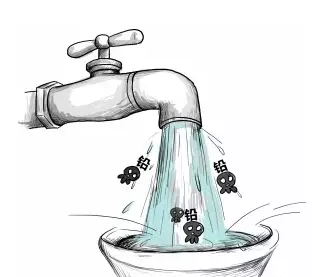Frequent occurrence of excessive lead incidents in taps
In July 2013, the Shanghai Bureau of Quality Supervision announced that of the 68 batches of spout products that it sampled, six of the batches had lead levels exceeding the standard. On July 14, Shanghai East China University of Science and Technology conducted a 32-hour experiment on 13 leading samples. It was found that the lead soaked water content of 9 brands exceeded the national standard.
In March 2014, CCTV exposed the chaos in the water faucet production industry in Wenzhou: After testing, faucets produced by Wenzhou family workshops had zinc levels exceeding 10 times those of national standards and lead levels exceeding 81 times those of national standards. After rough processing, it entered millions of households. Its toxicity is heavy. Workers in many factories “have gotten sick during the work processâ€. At present, Wenzhou Bureau of Quality Supervision began special rectification.
In July 2015, Hong Kong’s lead in drinking water exceeded its standard. The survey found that some welding products containing lead have been used in the welding of water pipes and faucets, which has the highest probability of containing lead in drinking water exceeding WHO standards...

Why copper tap repeatedly appeared "lead exceeded"? Many of these "dark screens" have to be said.
Where does lead come from?
The faucet that most affects water quality in the family is the valve core:
Ceramic valve core: suitable for severe public water quality, wear resistance, high temperature resistance, corrosion resistance, low water pollution, long service life
Rubber valve core: low cost, easy to aging damage, has now basically eliminated
Copper valve core: short life, long time of copper use, the tap will produce copper rust, and the presence of harmful substances such as lead will pollute the water
Where does lead come from?
1. Most faucet materials are cast copper alloys, containing trace amounts of lead
Most faucets on the market are cast copper alloys containing 4% to 8% lead. Lead will oxidize when it encounters air, forming a protective film. After the water comes in, this layer of protective film will fall off, causing lead to dissolve into the water and lead to lead out.
Faucet several major material pros and cons pk:
Cast iron faucet: iron-carbon alloy is the cheapest to leak, rust-prone water pollution has been eliminated
Copper faucet: brass, HPB59, lead-free copper, antibacterial copper general anti-wear, anti-corrosion, acid and alkali, has been processed, mature technology, antibacterial, antibacterial lead high
Stainless steel faucet: Stainless steel is more resistant to acids, alkalis, corrosion, lead-free, etc.
Alloy faucets: Aluminum alloys, etc. are generally inexpensive, easy to mass produce without toughness, easy to crack during use, short service life
Plastic faucet: PVC material and other rich colors, mold can be produced in large quantities is not strong
2. Lead casting process mixed with poor lead
The main material for domestic production of faucets is brass HPb59. Brass is an alloy composed of copper and zinc, but now lead is the cheapest, only 10,000 yuan per ton, and black heart merchants may add lead for profits. When lead is in contact with air, it will oxidize and form a protective film. However, water can cause the protective film of lead to fall off and be immersed in water, causing the precipitation of lead. At the same time, since tap water uses chlorine as a disinfectant, the residual chlorine in the water accelerates the aging of the faucet and the precipitation of lead. The use of brass faucets and water pipes for more than 5 years generally increases the amount of lead released.
3. Increased use of recycled copper as a leading raw material for impurities
When the industry first emerged, some consumers thought that the heavier the leader was, the thicker the wall thickness was, and the resistance increased. Over time, some unscrupulous merchants use recycled copper (other factories use the remaining copper slag for remelting) as raw materials, adding stainless steel parts or other alloy accessories to the faucets in order to cater to consumers’ consumer mentality of focusing on product weight. Zinc alloys, and the use of high-lead components in taps, etc., lead to an increase in impurities, which directly causes heavy metal content of the product to be severely exceeded and secondary pollution of water.
Where does lead come from? Third: Manufacturers do not do lead removal to reduce costs
Why do the taps contain lead? Because most of the faucets currently on the market are made of copper. Copper and lead are associated minerals, and copper must be lead! Therefore, responsible companies will add a lead process to the production of sanitary ware, but this is undoubtedly an increase in cost; unfortunately, many manufacturers do not do lead removal in order to reduce costs. This is why most copper faucets will contain lead.
Where does lead come from?
Surface water sources: About 50% of China’s water sources are contaminated, and hundreds of organic compounds and heavy metal ions enter the water source.
Groundwater source: presence of fluorine, arsenic, iron, manganese, etc.
Of the more than 4,000 water plants in and above the county level, 98% still use traditional water treatment techniques. If the water source is contaminated with heavy metal ions and organic compounds, the traditional craftsmanship will be inadequate.
Practitioners expose the dark screen of the faucet:
In addition to lead secondary pollution of taps, the water supply system may also be the culprit. Tap water flows from determining the source of water, processing water to tap water, to tapping tap water, and finally out of the user's tap. In fact, each of the above processes may cause water pollution.

Small TIPS: Eliminating overnight water to reduce lead risk
1. After the tap water has been disabled for several hours, it must be turned on for 1 to 2 minutes before use. Don't drink overnight tap water from taps.
2. Many families now have hot water supply, but it is best not to use it as drinking water or cooking, because the hot water contains many times more lead than cold water.
3. When purchasing faucets, we must pay attention to products with lead content, choose products that have passed the certification of China Quality Certification Center (CQC) safety products, or choose sanitary brands, because brand manufacturers have a strict set of quality control procedures, raw materials and The process is more secure.
<\p><\div>
Glass Computer Table,Glass Office Table,Glass Office Computer Table,Office Computer Table
Longsheng Office Furniture Co.,Ltd , https://www.longshengfurniture.com